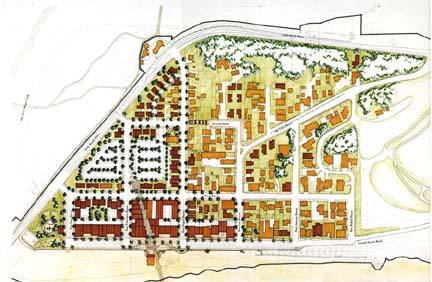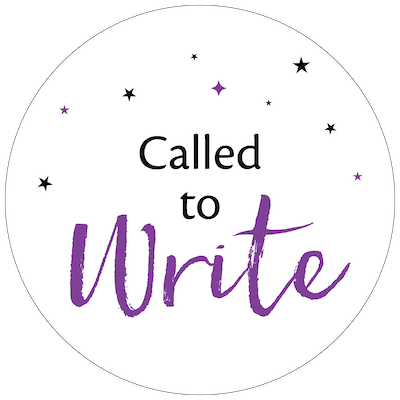Today’s article is on the subject of organizing and simplifying for writers, in a Q&A format with me and with my colleague Miriam Ortiz y Pino. Miriam helped me reorganize my office and design my schedule to help streamline my workflow and it’s made a big difference in what I’ve been able to accomplish.
We pulled together this list of questions from our Writer’s Circle members and from other frequently asked questions writers often pose to me.
If YOU have a question about organizing and simplifying your writing life that’s not covered here, not to worry. Miriam and I will be hanging out today and answering questions posted in the comments section on the blog. So if you have a question, be sure to post it promptly and we’ll do our best to answer it for you.
Q: What’s the best way to find extra time in my day?
Miriam: Creating routines, so that you become more masterful over the actions in the routine, allow you to get it done more quickly. You also will be able to do most repeatable things with a lower brain function because you develop muscle memory. That saves effort. Those little bits add up over the course of a day, a week, a month, and by the end of the year can save up to 6 weeks.
Jenna: I learned a ton from Miriam about making sure that I was using my time as effectively as possible, and routines have definitely become a mainstay solution for me. The Four in me (from the Enneagram) rebels against routine and structure (more on this below), but I’ve found that it makes writing (and other things) possible for me in a way that I hadn’t quite seen before. And, at the end of the day, if you’re having trouble finding time to write, put it at the beginning of the day. It’s an incredible boon to carve out time for you and your writing in the priority spot of your life.
Q: I hate structure. How can I make a regular routine for writing or creating when I rebel against it?
Miriam: If you don’t want to create structure or routine for your writing or creating, try making routines out of the other repetitive tasks in your life. Things like grocery shopping, processing the mail, and invoicing clients become easier with repetition, so they take both less time and less effort. That is how you save up to 2 hours a day – a little bit at a time. Just think of all the fun stuff you could do!
Jenna: Even though so many creatives (me included) rebel against structure, I’m amused to find that it’s something that truly makes a difference when it comes to writing productively and consistently for me. My take is to try out creating a structure for your creative work. You may actually be surprised to find you like it. And once you are in the habit of creating regularly, then start introducing variations. I’ve gained a tremendous amount of freedom in most of my life by creating a small amount of structure in part of my life, while in the past, when I had little or no structure at all, my life was much more stressful and chaotic.
Q: I hate systems and I want to rebel against them. How can I find super simple solutions that work without feeling rebellious?
Miriam: You can’t deny feelings. So, I suggest calling your system something else. How about method, or scheme? That way you can feel rebellious and still accomplish something. Then start with the end result you are seeking and reverse engineer the project. That usually provides the simplest solution.
Jenna: I love the idea of calling it something else, especially a scheme! Structure, systems, discipline, focus, goals — we creative types have learned to think of these as bad things that interfere with our creativity. But do they? Or are they simply useful containers that help us channel our efforts into finished results?
Q: What do I do when I want to write but my office is filled with clutter?
Miriam: Begin removing the clutter. It’s actually better to work on a little at a time so you get the benefit of practicing making decisions. It’s just an editing process with things instead of with words. Once you decide you don’t need something, remove it from the space.
Your creative space needs to be a sacred space where you honor your muse. I recommend starting with your desk. Take everything off of it, and dust it. Then return only the things you need to write with. Perhaps a pen and a pad and a computer is all you really need. You can put the pen in a pen cup. You can add a cup of coffee. Keep enough space to lay out the file with the stuff about the idea you are working on. Everything else needs to live elsewhere.
Jenna: As much as my office can get cluttered, I do feel better and in a higher vibration space for writing when I clear the decks first. Working with Miriam to take everything out and then only bring back what actually belonged was tremendously freeing for me.
Q: What suggestions do you have for tracking, organizing, and saving writing ideas, and writing projects?
Miriam: Keep your ideas in one place – a notebook, a computer file, a box, a bowl – it doesn’t matter what form – it matters that you are consistent in storing your initial ideas there.
Then mine the idea place for your projects. When you begin work on a particular idea, start a file or other place for it to live for the duration of the work. Don’t forget to cross it off, take it out, or delete it from the idea place.
Jenna: I have most of my current project ideas in Evernote, so I can take them with me (and add to them) on the go. I do also have some paper files. Like Miriam says, consistency is the key; there’s no one right answer. The beauty of all this consistency, structure, and systematic methodology is that once you decide what your method is, you don’t have to keep deciding every time you come up with a new project idea.
Q: What do I do with my project – and the associated mess – once I’m done?
Miriam: The last step of any project is to put away your toys. In other words, file the finished product with flair. Recycle any drafts, they are things you decided against so they need to go. Research gets tossed or returned to a file depending on if you had to footnote it. Clear the desk of any lingering notes about the project.
Now you can pull a new idea from your idea place and start a fresh project.
Jenna: Cleaning up at the end of a project is a lovely way of completing the energy associated with it. It’s harder for me to let go of interim drafts but I like the notion of it. :) I tend to keep an “archive” copy of my last draft with my notes in it, and the final one on my computer (with a redundant copy in Dropbox* so it’s stored off site).
Q: I’d love to know any tricks for organizing the massive amount of hard-copy printouts of my drafts (when I print them out to read through and edit). They end up in stacks or spread out in various places on my office floor. Seems there has to be a better way than having stacks with bunches of sticky notes attached to them.
Miriam: You have actually described an excellent system for editing. What may be a problem is not sticking to your decisions. Once you print out and mark up a copy, input the changes and toss each page as you do. If you have to leave a pile between writing sessions, use a giant binder clip to keep each version neat.
If you have the space to stack, by project, in a bin, basket, or behind a cabinet door, it can help with the cluttered feeling between sessions.
Jenna: It’s tricky to deal with the visual clutter between writing sessions, especially for more sensitive types. I like the idea I learned from a old boss, to have a “staging” area where I can keep works in progress “neatly” stacked (I do have to remind myself to do this!).
Q: What should I do with early drafts?
Miriam: Recycle them, they represent things you decided against.
Jenna: Ditching old drafts is a tougher one for me, but I like the principle behind it, and that’s why we’ve invited Miriam to consult with us! As writers, we do have to keep making choices along the way about our work, and I like the idea of getting in the habit of trusting ourselves and knowing we can revise later if we need to.
Q: How do I quickly refocus if I get interrupted?
Miriam: It is much easier to refocus when there isn’t a lot of clutter, and when you are in the habit of working at a certain time. However, you can quickly refocus by closing your eyes, taking a deep breath and then actually asking yourself “ok, now where was I?”
Jenna: And I do a lot to make sure I don’t get interrupted in the first place — see below.
Q: How do I keep from getting interrupted in the first place?
Miriam: Good communication with potential interrupters is essential. Turn off the ringer, alarms, and close the door. Tell people you expect not to be disturbed – put up a sign if you have to.
Establish good boundaries around your creative and work time. Then enforce them. Boundaries work because they anticipate and accommodate other people’s problems with them. “In half an hour, I’m all yours.”
Don’t think of it as being unavailable for an hour, think of it as being with a client – your muse – right now and that you will be MORE available in an hour for others.
Jenna: We do have to think of our writing as being JUST AS IMPORTANT as most other things (excluding true emergencies of course). Setting great boundaries around our writing time is truly a critical and important part of the process. We have to be willing to tell the people in our lives that we have other priorities too.
Q: How do I decide what to work on?
Miriam: Well, it doesn’t really matter. You can use your intuition, ask the Magic 8 Ball, follow a matrixed schedule, or throw darts at your to do list. None of these will work if you don’t only pick from things that get you to your goals and are in alignment with your values.
A good rule of thumb is to have your routines in place so the stuff that must get done gets done. Then pick 1-3 other things to achieve each day.
Don’t start new projects until you are done with the one you are working on. It is faster in the long run to work on just 3-4 at a time in various stages (outline, draft, final edit) and add in one as each one completes.
Jenna: I have a bunch of those kinds of tricks to help people hone in on picking a project, which is often quite difficult for many creatives. One thing to recognize is that having too many ideas may actually be a commitment issue. In other words, you’re afraid to commit, pick the wrong project, fail, etc. So if you don’t actually pick a project, you’ll never fail, never face the blank page, not have to “give up” on a particular project. But it also keeps everything locked in idea stage. So get some help tuning into the project you want to do first. (More on the subject of “Overcoming Indecision” coming soon, stay tuned.)
On the subject of routines, I agree with Miriam with the clarification that I recommend doing the writing first and making sure the routines don’t swallow up potential writing time (or expand to fill it). Be careful. Resistance is sneaky.
Q: What can I do when my excuses are really procrastination?
Miriam: Begin anyway. Play games with your procrastination. Set fake deadlines, use ridiculous associations, throw a tantrum and then do it anyway.
Jenna: Yeah, it’s procrastination. I’ve never met an excuse that isn’t truly fear, doubt, anxiety, resistance, etc in disguise. Figure out how to you-proof your writing and then just do it. The Writer’s Circle is a great help with this.
Your turn
What are your questions about getting organized or simplifying your writing, your writing process, life, or schedule? Post your questions in the comments on the blog and Miriam and I will answer them for you.
 Miriam Ortiz y Pino is a Certified Professional Organizer, Simplicity Expert and Coach, Entrepreneur, Writer, Blogger, and Creator of The Streamlined System. She works with entrepreneurs and other busy and creative people to eliminate the distractions, simplify systems and create routines so they can get it all done practically effortlessly. You can find Miriam at http://www.morethanorganized.net.
Miriam Ortiz y Pino is a Certified Professional Organizer, Simplicity Expert and Coach, Entrepreneur, Writer, Blogger, and Creator of The Streamlined System. She works with entrepreneurs and other busy and creative people to eliminate the distractions, simplify systems and create routines so they can get it all done practically effortlessly. You can find Miriam at http://www.morethanorganized.net.
Thanks Miriam!
Warmly,

Image by © Helen King/CORBIS
Thanks for reading.




